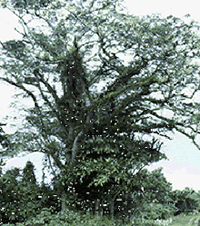
The Mimosoideae are a traditional subfamily of trees, herbs, lianas, and shrubs in the pea family (Fabaceae) that mostly grow in tropical and subtropical climates. They are typically characterized by having radially symmetric flowers, with petals that are twice divided (valvate) in bud and with numerous showy, prominent stamens.

Xylosma is a genus of flowering plants in the family Salicaceae. It contains around 100 species of evergreen shrubs and trees commonly known as brushhollies, xylosmas, or, more ambiguously, "logwoods". The generic name is derived from the Greek words ξύλον (xylon), meaning "wood, tree", and ὀσμή (osmé), meaning "smell", referring to the fragrant wood of some of the species. The Takhtajan system places it in the family Flacourtiaceae, which is considered defunct by the Angiosperm Phylogeny Group.
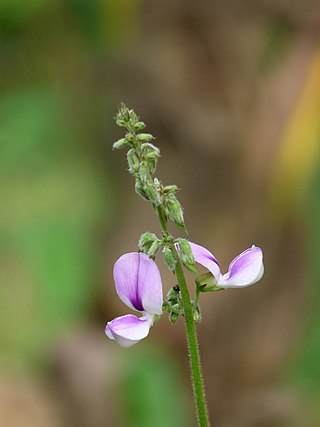
Pueraria is a genus of 15–20 species of legumes native to south, east, and southeast Asia and to New Guinea and northern Australia. The best known member is kudzu, also called Japanese arrowroot. The genus is named after 19th century Swiss botanist Marc Nicolas Puerari.
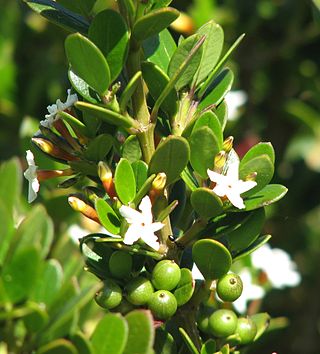
Alyxia is an Australasian genus of flowering plant in the dogbane family, Apocynaceae. It contains at present 106 species, but Alyxia stellata and A. tisserantii are very variable, might be cryptic species complexes, and are need of further study. It consists of shrubby, climbing or scrambling plants. This genus occurs in China, the Himalayas, Southeast Asia, Australia, New Caledonia and the Pacific Islands. There are 14 species in Australia, 21 in New Caledonia and 7 in the other Pacific Islands, including Hawaiʻi.
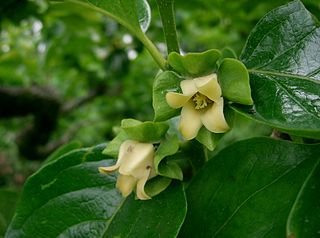
Diospyros is a genus of over 700 species of deciduous and evergreen trees and shrubs. The majority are native to the tropics, with only a few species extending into temperate regions. Individual species valued for their hard, heavy, dark timber, are commonly known as ebony trees, while others are valued for their fruit and known as persimmon trees. Some are useful as ornamentals and many are of local ecological importance. Species of this genus are generally dioecious, with separate male and female plants.

Canarium is a genus of about 100 species of tropical and subtropical trees, in the family Burseraceae. They grow naturally across tropical Africa, south and southeast Asia, Indochina, Malesia, Australia and western Pacific Islands; including from southern Nigeria east to Madagascar, Mauritius, Sri Lanka and India; from Burma, Malaysia and Thailand through the Malay Peninsula and Vietnam to south China, Taiwan and the Philippines; through Borneo, Indonesia, Timor and New Guinea, through to the Solomon Islands, Vanuatu, New Caledonia, Fiji, Samoa, Tonga and Palau.
Dischidia is a genus of plants in the “dog-bane” family Apocynaceae, collectively known as the “milkweeds”. They are epiphytes, native to tropical areas of China, India as well as Bhutan’s southern borders, wherever minimal frost occurs. Additionally, they are known from most areas of Indo-China, including forested areas of Myanmar, Thailand, Vietnam, Cambodia, Laos, and some parts of Malaysia and Singapore.

Archidendron is a genus of flowering plants in the pea family, Fabaceae. It includes 98 species which range from India through Indochina, southern China, Taiwan, Malesia, and Papuasia to Queensland and New South Wales.
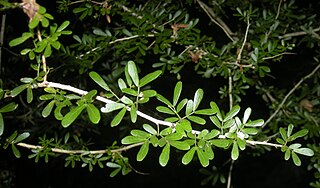
Archidendropsis is a genus of flowering plants in the family Fabaceae. It includes 11 species, which are native to New Guinea, the Bismarck Archipelago, Solomon Islands, and New Caledonia.

Ochrosia is a genus of flowering plants, first described in 1789. It is in the family Apocynaceae, native to Southeast Asia, Australia, and various islands of the Indian and Pacific Oceans.
- Ochrosia ackeringae(Teijsm. & Binn.) Miq. – Indonesia, Philippines, Papuasia, Christmas Island
- Ochrosia acuminataTrimen ex Valeton – Sulawesi
- Ochrosia alyxioidesGuillaumin – Vanuatu
- Ochrosia apoensisElmer – Luzon, Mindanao
- Ochrosia balansae(Guillaumin) Baill. ex Guillaumin – New Caledonia
- Ochrosia basistaminaHendrian – Sulawesi
- Ochrosia bodenheimarumGuillaumin – Vallée de la Toutouta in New Caledonia
- Ochrosia borbonicaJ.F.Gmel. – Mauritius + Réunion; naturalized in Guangdong
- Ochrosia brevitubaBoiteau – New Caledonia
- Ochrosia brownii(Fosberg & Sachet) Lorence & Butaud – Nuku Hiva in Marquesas
- Ochrosia citrodoraK.Schum. & Lauterb. – New Guinea
- Ochrosia coccinea(Teijsm. & Binn.) Miq. – Maluku, Sulawesi, New Guinea, Solomon Islands; naturalized in Guangdong
- Ochrosia comptaK.Schum., Hōlei – Hawaii
- Ochrosia ellipticaLabill. – Lord Howe Island, Queensland, New Caledonia, Vanuatu, Nauru; naturalized in Guangdong + Taiwan
- Ochrosia fatuhivensisFosberg & Sachet – Fatu Hiva in Marquesas but extinct
- Ochrosia ficifolia(S.Moore) Markgr. – New Guinea
- Ochrosia glomerata(Blume) F.Muell. – Borneo, Sulawesi, Philippines, Maluku, New Guinea, Solomon Islands
- Ochrosia grandifloraBoit. – New Caledonia
- Ochrosia haleakalaeH.St.John, Hōlei – Maui + island of Hawaiʻi in Hawaiian Islands
- Ochrosia hexandraKoidz. – Kazan-retto
- Ochrosia inventorumL.Allorge – New Caledonia
- Ochrosia iwasakiana(Koidz.) Koidz. ex Masam.
- Ochrosia kauaiensisH.St.John, Hōlei – Kauaʻi in Hawaiian Islands
- †Ochrosia kilaueaensisH.St.John, Hōlei – island of Hawaiʻi in Hawaiian Islands, but extinct
- Ochrosia kilneriF.Muell. – Queensland
- Ochrosia lifuanaGuillaumin – Loyalty Islands + Isle of Pines in New Caledonia
- Ochrosia mariannensisA.DC. – Mariana Islands
- Ochrosia mianaBaill. ex Guillaumin – New Caledonia
- Ochrosia minima(Markgr.) Fosberg & Boiteau – Queensland, Papua New Guinea
- Ochrosia moorei(F.Muell.) F.Muell. ex Benth. – Queensland, New South Wales
- Ochrosia mulsantiiMontrouz. – New Caledonia
- Ochrosia nakaiana(Koidz.) Koidz. ex H.Hara – Ogasawara-shoto
- Ochrosia newellianaF.M.Bailey – Queensland
- Ochrosia novocaledonicaDäniker – New Caledonia
- Ochrosia oppositifolia(Lam.) K.Schum. – Seychelles, Chagos Islands, Sri Lanka, Maldive Islands, Andaman & Nicobar Islands, Thailand, Vietnam, W Malaysia, Indonesia, Papuasia, Samoa, Tonga, Tuvalu, Vanuatu, Wallis & Futuna, French Polynesia, Line Islands, Micronesia
- Ochrosia poweriF.M.Bailey – Queensland, New South Wales
- Ochrosia sciadophyllaMarkgr – Bismarck Archipelago, Solomon Islands
- Ochrosia sevenetiiBoiteau – New Guinea
- Ochrosia silvaticaDäniker – New Caledonia
- Ochrosia solomonensis(Merr. & L.M.Perry) Fosberg & Boiteau – Solomon Islands
- Ochrosia syncarpaMarkgr. – Bali, Lombok, Timor, Flores
- Ochrosia tahitensisLaness. ex Pichon – Tahiti
- Ochrosia tenimberensisMarkgr. – Tanimbar Islands
- Ochrosia nukuhivensisFosberg & Sachet = Rauvolfia nukuhivensis(Fosberg & Sachet) Lorence & Butaud
- Ochrosia sandwicensisA.DC. = Rauvolfia sandwicensisA.DC.
- Ochrosia tuberculata(Vahl) Pichon = Rauvolfia sandwicensisA.DC.

Pseuderanthemum is a genus of plants in family Acanthaceae with a pantropical distribution.

Xanthostemon is a genus of plants in the myrtle family Myrtaceae, first described in 1857 by the German–born Australian botanist Ferdinand von Mueller. The genus is distributed across Malesia, Papuasia and northern Australia. The genera Pleurocalyptus and Purpureostemon from New Caledonia are morphologically close to Xanthostemon.
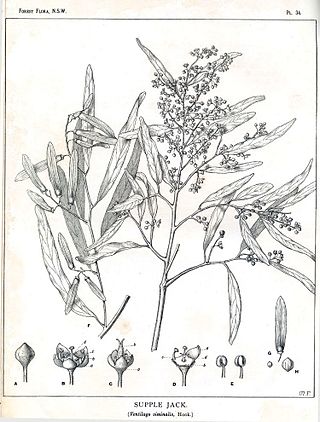
Ventilago is a genus of plants in the family Rhamnaceae. It includes about 40 species found in the tropics of South and SE Asia, Australasia, with one species each in Africa and Madagascar.
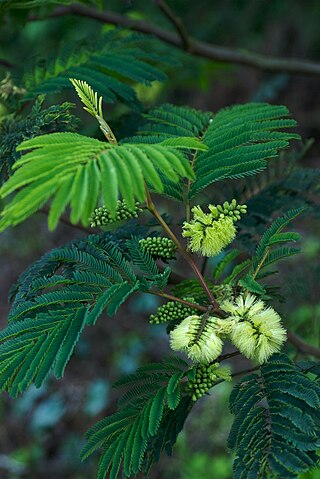
Paraserianthes lophantha, the Cape Leeuwin wattle, Bicol wattle, Cape wattle, crested wattle or plume albizia, is a fast-growing tree with creamy-yellow, bottlebrush like flowers. It is the sole species in genus Paraserianthes.
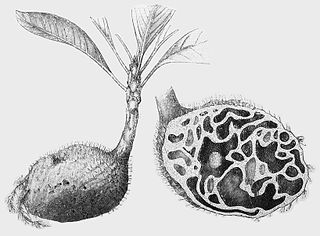
Hydnophytum is a genus of epiphytic myrmecophytes native to Southeast Asia, the Pacific region and also extending into Queensland in northern Australia. The name is derived from the Ancient Greek hydnon "tuber", and phyton "plant", after their appearance with their swollen succulent stems. The species grow in tree branches and on trunks. Like the related genus Myrmecodia, they are known as antplants or ant-house plants. The type species is Hydnophytum formicarum from the Philippines. The genus contains 55 species, of which 44 are found in and around the island of New Guinea. Many are poorly known, with 11 known only from the holotype.

Atalantia is a genus of flowering plants in the citrus family, the Rutaceae.

Mezoneuron is a genus of flowering plants in the legume family, Fabaceae. It belongs to the subfamily Caesalpinioideae and the tribe Caesalpinieae.
